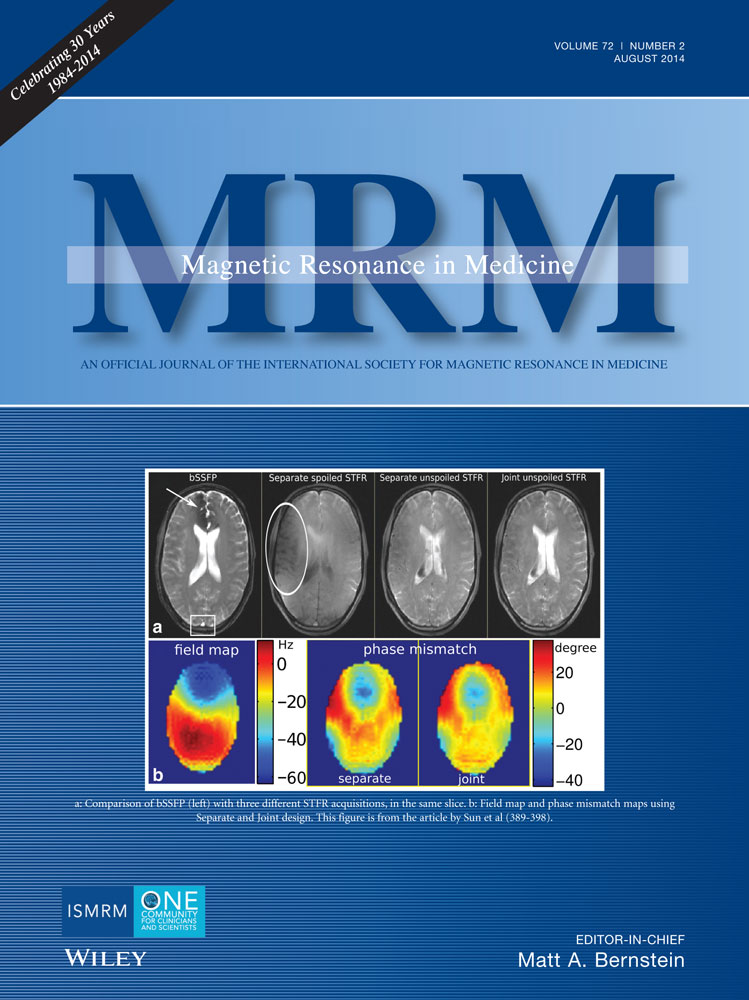Max-IDEAL: A max-flow based approach for IDEAL water/fat separation
Abstract
Purpose
To propose a novel approach to water/fat separation using a unique smoothness constraint.
Theory and Methods
Chemical-shift based water/fat separation is an established noninvasive imaging tool for the visualization of body fat in various anatomies. Nevertheless, B0 magnetic field inhomogeneities can hamper the water/fat separation process. In this work, B0 variations are mapped using a convex-relaxed labeling model which produces a coarse estimate of the field map, while considering T2* decay during the labeling process. Fat and water components are subsequently resolved using T2*-IDEAL. An adaptive spatial filtering (ASF) was introduced to improve the robustness of the estimate. The method was tested on cardiac and abdominal datasets from healthy volunteers and nonalcoholic fatty liver disease (NAFLD) patients.
Results
Out of 168 cardiac and abdominal images, only 1 case has shown water/fat swaps that can hinder the clinical interpretation of the underlying anatomy.
Conclusion
This work demonstrates a new water/fat separation approach that prevents the occurrence of water/fat swaps, by means of a unique smoothness constraint. Incorporating T2* effect in the labeling procedure and including the ASF processing enhance the robustness of the proposed approach and permit the procedure to handle abrupt B0 variations within the field of view. Magn Reson Med 72:510–521, 2014. © 2013 Wiley Periodicals, Inc.




